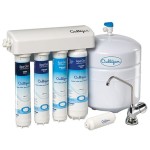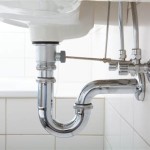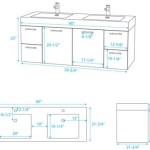Sink Stinks: Troubleshooting and Solutions
A foul odor emanating from a sink drain is a common household problem. This issue can be irritating and, in some cases, indicative of underlying plumbing concerns that necessitate prompt attention. Understanding the potential causes of sink odors and implementing appropriate solutions is crucial for maintaining a clean and sanitary environment.
The unpleasant smell is often the accumulated result of organic matter breaking down within the drain system. Food particles, hair, grease, and other debris can become trapped, providing a breeding ground for bacteria. As these materials decompose, they release gases, such as hydrogen sulfide and methane, which are responsible for the characteristic rotten egg or musty odor. The specific smell can vary depending on the type of material decaying and the types of bacteria present.
Identifying the source of the sink odor is the first step in effectively addressing the problem. While the drain itself is the primary suspect, other factors, such as the plumbing vent system or the garbage disposal (if present), should also be considered. A careful assessment of the smell's intensity and frequency, as well as any recent changes in plumbing usage, can provide valuable clues.
Effective Cleaning Solutions
Several cleaning methods can be employed to eliminate the build-up of odor-causing material in sink drains. The simplest approach involves flushing the drain with hot water. Running hot water for several minutes can help dislodge loose debris and wash away surface-level bacteria. This method is most effective as a preventative measure, used regularly to maintain a clean drain.
A mixture of baking soda and vinegar is another common and effective cleaning solution. Pouring one cup of baking soda down the drain, followed by one cup of vinegar, creates a chemical reaction that foams and fizzes. This reaction helps to loosen and break down built-up grime and organic matter. Allow the mixture to sit for approximately 30 minutes before flushing the drain with hot water. This process can be repeated as needed, and it is generally safe for most plumbing systems.
Boiling water can also be used to flush the drain. The high temperature of boiling water can help to melt grease and dislodge stubborn blockages. However, caution should be exercised when using this method, as boiling water can damage certain types of pipes, particularly PVC pipes common in older homes. Avoid using boiling water if you suspect your pipes are made of PVC or if you are unsure of their material composition.
Enzymatic drain cleaners offer a more biological approach to cleaning. These cleaners contain enzymes that break down organic waste into smaller, less odorous compounds. They are generally considered safe for plumbing systems and are effective at targeting the source of the odor. However, enzymatic cleaners may require multiple applications and can take longer to produce results compared to chemical drain cleaners. It is important to select an enzymatic cleaner specifically designed for drain cleaning and to follow the manufacturer's instructions carefully.
Chemical drain cleaners are available for more severe cases of drain blockage and odor. These cleaners typically contain harsh chemicals, such as sodium hydroxide or sulfuric acid, that dissolve organic matter and clear blockages. While effective, chemical drain cleaners can be corrosive and potentially damaging to pipes, especially if used improperly or frequently. They can also pose a risk to human health and the environment. Exercise extreme caution when using chemical drain cleaners, and always wear appropriate protective gear, such as gloves and eye protection. Follow the manufacturer's instructions meticulously, and avoid mixing different types of chemical drain cleaners.
Inspecting the P-Trap
The P-trap, the curved section of pipe located beneath the sink, plays a crucial role in preventing sewer gases from entering the home. This trap is designed to hold a small amount of water, creating a seal that blocks the passage of gases. If the P-trap dries out, sewer gases can escape through the drain, resulting in an unpleasant odor. This commonly occurs in sinks that are not used frequently, such as guest bathroom sinks or basement laundry sinks.
To address this issue, simply run water down the drain for a few minutes to refill the P-trap. Regularly running water in infrequently used sinks can prevent the P-trap from drying out. If the odor persists despite refilling the P-trap, the trap itself may be clogged with debris. In this case, the P-trap should be disassembled and cleaned.
To disassemble the P-trap, place a bucket beneath the trap to catch any water or debris. Carefully loosen the slip nuts that connect the P-trap to the drain pipes. Once the slip nuts are loosened, the P-trap can be removed. Clean the inside of the P-trap thoroughly, removing any accumulated hair, food particles, or other debris. A small brush or hooked tool can be helpful for reaching difficult-to-access areas. After cleaning, reassemble the P-trap, ensuring that the slip nuts are tightened securely to prevent leaks.
Inspect the P-trap for signs of damage, such as cracks or leaks. A damaged P-trap may not be able to hold water effectively, allowing sewer gases to escape. If the P-trap is damaged, it should be replaced. Replacement P-traps are readily available at most hardware stores.
Addressing Garbage Disposal Issues
If the sink is equipped with a garbage disposal, the disposal itself may be the source of the odor. Food particles can become trapped in the disposal's grinding chamber, leading to bacterial growth and unpleasant smells. Regularly cleaning the garbage disposal is essential for preventing odors and maintaining its proper function.
A simple way to clean the garbage disposal is to run cold water while operating the disposal for a short period. This helps to flush out any loose food particles. Grinding ice cubes in the disposal can also help to dislodge caked-on debris and sharpen the blades.
Citrus fruits, such as lemons or limes, can be used to freshen the garbage disposal. Cut a lemon or lime into wedges and place them in the disposal. Run the disposal with cold water until the citrus wedges are ground up. The citrus oils will help to deodorize the disposal and leave a fresh scent.
Baking soda and vinegar can also be used to clean the garbage disposal. Pour one cup of baking soda down the disposal, followed by one cup of vinegar. Allow the mixture to sit for approximately 30 minutes before flushing the disposal with hot water while operating it. This process will help to break down grease and other build-up.
Avoid putting certain types of food waste down the garbage disposal, as they can contribute to odors and blockages. These include fibrous foods, such as celery and corn husks, starchy foods, such as potatoes and pasta, and greasy foods, such as oil and fats. These materials can clog the disposal and create a breeding ground for bacteria. Dispose of these types of food waste in the trash instead.
If the odor persists despite regular cleaning, the garbage disposal may require a more thorough cleaning. Consult the manufacturer's instructions for specific cleaning recommendations. In some cases, it may be necessary to disassemble the disposal and clean the individual components.
Furthermore, consider the drain hose that connects the garbage disposal to the drain line. This hose can accumulate food particles and grease over time, contributing to odors. Disconnect the hose and clean it thoroughly with a brush and soapy water. Ensure that the hose is properly reconnected and that the connections are secure to prevent leaks.
The sink flange connecting the garbage disposal to the sink basin can also be a source of odors. Remove the flange and clean it thoroughly, removing any accumulated grime or sealant residue. Replace the flange if it is damaged or worn.
If the odor persists despite these troubleshooting steps, the garbage disposal may be malfunctioning. Consider consulting a qualified plumber to inspect the disposal and determine if it needs to be repaired or replaced.

How To Clean A Stinky Sink Drain Home Repair Tutor

Deodorize A Kitchen Sink That Smells 5 Ways

How To Remove Sink Odor With Baking Soda And Vinegar Zep Drain Defense Prevent

How To Clean A Smelly Drain Easy Diy Fixes For Foul Odors

How To Fix Smelly Sink Drains Using At Home Blockbusters

Kitchen Drain Stinks Do This With Your Sink And You Will Be Shocked

How To Clean A Smelly Drain Easy Diy Fixes For Foul Odors
:max_bytes(150000):strip_icc()/__opt__aboutcom__coeus__resources__content_migration__mnn__images__2018__08__sink_drain-351af8e441034f319fe07f00c091d8b6.jpg?strip=all)
How To Clean A Smelly Drain Naturally

How To Clean A Smelly Drain Liquid Plumr

Stinky Sink 7 Ways To Freshen It Up Bob Vila







